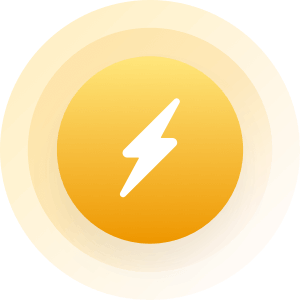| Topic: Wild In Yellowstone | |
|---|---|
|
Edited by
SassyEuro2
on
Wed 08/26/15 06:34 PM
|
|
|
http://theweek.com/speedreads/573947/disappointed-yellowstone-visitor-left-comment-card-asking-park-train-bears-where-guests/
A disappointed Yellowstone visitor left a comment card asking the park to 'train your bears to be where guests can see them' 1:47 p.m. ET Visitors to Yellowstone National Park obviously want to see wildlife, and the odds of spotting a crowd-favorite bear are "not too bad," according to the park's website, which notes that "visitors reported more than 40,000 bear sightings between 1980 and 2011." One guest, however, is feeling left out of all that fun. On what appears to be a legitimate comment card from Xanterra Parks and Resorts, a Reddit user reported receiving this feedback: "Our visit was wonderful but we never saw any bears," the unnamed guest complains. "Please train your bears to be where guests can see them. This was an expensive trip to not get to see bears." Earlier this year, a grizzly was involved in the first fatal attack inside the park since 2011. That's due, in part, to the fact that Yellowstone National Park is not a zoo — and has no trained bears. Jeva Lange GLOBAL WARMING NASA data shows sea levels are on average 3 inches higher than in 1992 NASA scientists said on Wednesday that data collected by satellites shows sea levels are on average three inches higher than they were in 1992, due to warmer oceans and mountain glaciers and polar ice caps melting. "It's very likely to get worse in the future," Steve Narem, a University of Colorado geophysicist, said. A U.N. panel projected in 2013 that sea levels would rise between one and three feet by the year 2100, and the NASA scientists said it would likely be on the higher end of the projection, Time reports. The data shows that some areas of the Pacific Ocean have falling sea levels, but scientists say that's because ocean currents and weather cycles have offset some changes. They warn that the West Coast of the United States could see a jump in sea levels over the next 20 years. Catherine Garcia ---------------------------------------- 3 hours ago- Fires from lighting or lava? http://youtu.be/-HPotpSlW0M/ ------------------------------------- National Geographic, documentary, 2015 (2weeks ago) 1:16+ Yellowstone Supervolcano http://youtu.be/pLNregoUqJc/ Place Your Updates, links, pics, & comments 
|
|
|
|
|
|
CNN - August 24,2015
http://www.cnn.com/2015/04/24/us/yellowstone-supervolcano-magma-reservoir-discovery/ ----------------------------------- August 26, 2014 http://news.usc.edu/85475/a-crusty-mystery-scientists-dig-into-the-origin-of-strange-earthquakes/ University of Southern California USC News Science/Technology A crusty mystery: Scientists dig into the origin of strange earthquakes Currents of semi-liquid rock are the key to the frequency of quakes away from tectonic plate boundaries, USC study finds BY Robert Perkins AUGUST 26, 2015 Damage in Montana is seen from the August 1959 Hebgen Lake earthquake. (Photo/USGS) It’s not a huge mystery why Los Angeles experiences earthquakes. The city is right along a boundary between two tectonic plates — they shift, we shake. But what about places that aren’t along tectonic plate boundaries? For example, seismicity on the North American plate occurs as far afield as southern Missouri, where earthquakes between 1811 and 1812 estimated at around magnitude 7.0 caused the Mississippi River to flow backward for hours. Until now, the source of that seismicity has remained a mystery. While earthquakes along tectonic plate boundaries are caused by motion between the plates, earthquakes away from fault lines are primarily driven by motion beneath the plates, according to a new study published by USC scientist Thorsten Becker inNature on Aug. 27. Hot rock Just beneath the Earth’s crust is a layer of hot, semi-liquid rock that is continually flowing — heating up and rising, then cooling and sinking. That convective process, interacting with the ever-changing motion of the plates at the surface, is driving intraplate seismicity and determining in large part where those earthquakes occur. To a lesser extent, the structure of the crust above also influences the location, according to their models. “This will not be the last word on the origin of strange earthquakes. However, our work shows how imaging advances in seismology can be combined with mantle flow modeling to probe the links between seismicity and mantle convection,” said Becker, lead author of the study and professor of Earth sciences at the USC Dornsife College of Letters, Arts and Sciences. Becker and his team used an updated mantle flow model to study the motion beneath the mountain belt that cuts north to south through the interior of the Western United States. The area is seismically active — the reason Yellowstone has geysers is that it sits atop a volcanic hotspot. Previously, scientists had suggested that the varying density of the plates was the main cause. (Imagine a mountain’s own weight causing it to want to flow apart and thin out.) Convective currents Instead, the team found that the small-scale convective currents beneath the plate correlated with seismic events above in a predictable way. They also tried using the varying plate density or “gravitational potential energy variations” to predict seismic events and found a much poorer correlation. “This study shows a direct link between deep convection and shallow earthquakes that we didn’t anticipate, and it charts a course for improved seismic hazard mapping in plate interiors,” said Tony Lowry, co-author of the paper and associate professor of geophysics and geodynamics at Utah State University. Becker and Lowry collaborated with researchers from University Roma Tre in Italy, the University of New Mexico, Scripps Institution of Oceanography and the Massachusetts Institute of Technology. The research was supported by the National Science Foundation (grants EAR-0350028, EAR-0732947, EAR-1215720, EAR-1215757, EAR-0955909, and EAR-1358622) and by the Southern California Earthquake Center. Science/Technology In hopes of providing hard data to manage recovery, a USC scientist studies the latest in a string of related disasters. Science/Technology Earthquake experts weigh in:San Andreas a bit shaky Would the ‘Big One’ live up to the Hollywood hype? Perhaps, but in different ways than the new movie suggests. HealthUniversity Science/Technology Big quake on San Andreas Fault could lead to domino effect USC earth sciences Professor James Dolan tells Seismological Society of America that a major earthquake could trigger large ones on other faults. --------------------- Videos... Yellow Stone Volcanic Activity & Quakes. August 25,2015 http://youtu.be/9CgZn13BQcI/ August 26,215 http://youtu.be/76UBJ_LO9Fo/ August 27,2015, 18 hours ago http://youtu.be/4m7_1M9Hb74/ |
|
|
|
|






